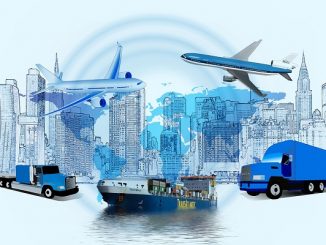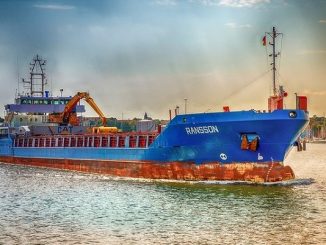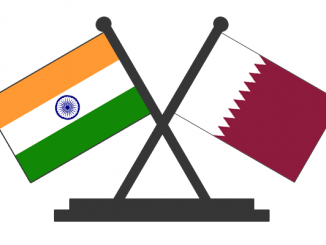
Jan 28: Union Minister for Ports, Shipping and Waterways and Ayush Shri Sarbananda Sonowal inaugurated The National Logistics Portal (marine) in New Delhi today.
The National Logistic Portal (marine) (NLP) is a project of national importance, as envisaged by the Ministry of Ports Shipping Waterways and the Ministry of Commerce & Industry. It is a one-stop platform aimed at connecting all the stakeholders of the logistics community using IT, to improve efficiency and transparency by reducing costs and time delays and achieving easier, faster, and more competitive offerings of services, to promote the growth of the logistics sector and thereby improve trade. NLP will be a single window for all trade processes of the logistics sector spread across the country covering all modes of transport in the waterways, roadways, and airways along with an E-marketplace to provide a seamless end-to-end logistic service coverage.
NLP Is a one-stop marketplace where all logistic stakeholders are integrated for easier, speedier & competitive services thereby promoting trade and growth.
| Single Platform to perform all core activities of the Importer / Exporter / Customs Broker / Freight Forwarder |
| End-to-end functionality to perform self-clearance digital Online transactions with custodians |
| Providing a level playing field to relevant stakeholders (large & small) thus increasing the competition |
| Complete domestic tracking of the shipment with notifications at each stage |
| Real-time information of the activities which are generally not within reach of Importer / Exporter / Customs BrokerEnhanced transparency in Government to Business relations and Ease of Doing Business |
| Document Management System to store all the important documents securely on Cloud Storage |
| Reduced costs and timeframes for the execution of trade and logistics operations |
| The paper-less transaction, for all the stakeholders along with BI reporting and data analytics |
The implementation of NLP had been initiated in July 2021 with the development of NLP Marine as a first phase. It is an “open platform” that allows the coexistence of multiple service providers to provide EXIM-related services independently or by combining different connectivity options. It has the capability to integrate with various Port Operating Systems/ Terminal Operating Systems, ICEGATE, Other regulatory agencies, and stakeholder(s) systems in the ecosystem. It aims to reduce regulatory complexities and enhance the ease of doing business by moving towards user-friendly paperless trade. This will be accomplished by utilizing the prowess of IT infrastructure to develop a single window, centralizing all necessary documentation, compliance certifications, and formal procedures necessary for the EXIM trade.
The activities of NLP Marine are categorized into four distinct verticals viz. i. Carrier, ii. Cargo, iii. Banking and Finance and iv. Regulatory Bodies and Participating Government Agencies (PGAs). This will enrich the user experience through end-to-end tracking of the shipment with notifications at each stage, seamless exchange of documents, and the ability to securely transact with transparency and speed.
The NLP Marine experience is enhanced further with the Latch On feature, which facilitates the trade in providing the required features that are not directly embedded into NLP Marine, by linking through systems developed by other agencies seamlessly without duplication of efforts. It is envisaged that many standalone applications, developed by multiple vendors, users, and other stakeholders will integrate with NLP Marine through appropriate curation. It also enables digital transactions for payments required for the clearance processes such as Port charges, CFS charges, shipping line charges, transportation charges, etc.
Addressing the gathering Shri Sarbananda Sonowal said, “The Prime Minister on 15th August 2021 announced the PM Gati Shakti National Master Plan to provide systematic, multi-modal connectivity to various economic zones for seamless movement of people, goods & services resulting in the efficient conduct of logistics and economic activities. To fulfil this mission Ministry of Ports, Shipping and Waterways has developed the NLP (marine) as an “open platform” that allows the coexistence of multiple service providers to provide EXIM-related services independently or by combining different connectivity options.”
The activities of NLP Marine are categorized into four distinct verticals viz. i. Carrier, ii. Cargo, iii. Banking and Finance and iv. Regulatory Bodies and Participating Government Agencies (PGAs). This will enrich the user experience through end-to-end tracking of the shipment with notifications at each stage, seamless exchange of documents, and the ability to securely transact with transparency and speed.
The NLP Marine experience is enhanced further with the Latch On feature, which facilitates the trade in providing the required features that are not directly embedded into NLP Marine, by linking through systems developed by other agencies seamlessly without duplication of efforts. It is envisaged that many standalone applications, developed by multiple vendors, users, and other stakeholders will integrate with NLP Marine through appropriate curation. It also enables digital transactions for payments required for the clearance processes such as Port charges, CFS charges, shipping line charges, transportation charges, etc.
Addressing the gathering Shri Sarbananda Sonowal said, “The Prime Minister on 15th August 2021 announced the PM Gati Shakti National Master Plan to provide systematic, multi-modal connectivity to various economic zones for seamless movement of people, goods & services resulting in the efficient conduct of logistics and economic activities. To fulfil this mission Ministry of Ports, Shipping and Waterways has developed the NLP (marine) as an “open platform” that allows the coexistence of multiple service providers to provide EXIM-related services independently or by combining different connectivity options.”
Disclaimer: We donot claim that the images used as part of the news published are always owned by us. From time to time, we use images sourced as part of news or any related images or representations. Kindly take a look at our image usage policy on how we select the image that are used as part of the news.


